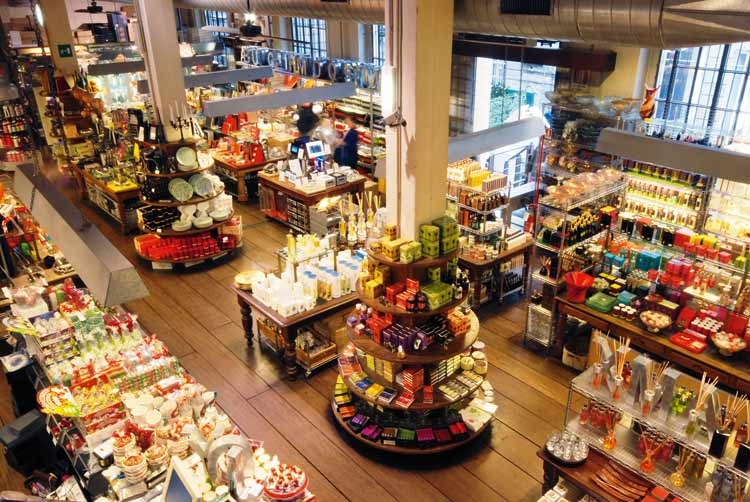Thought Leadership Corner: TRICK OR TREAT ON THE HIGH STREET
Is the retail high street facing its very own zombie apocalypse?
You may be wondering what on earth I’m talking about. Allow me to explain.
In a report called 'The future of retailing and the implications for real estate', Aviva Investors - the investment arm of Aviva, who are more widely recognised as an insurance company - warned that high street retail is going to “decline significantly due to further e-commerce penetration.” The report was picked up by some of the mainstream press, including the Times, who ran it with the headline Traditional stores’ days are numbered, Aviva warns.
The Times went on to say: “One of Britain’s biggest property owners has predicted the death of the traditional shop, as it warns that most physical stores on the high street will be wiped out by the relentless rise of online shopping.”
Death..? Wiped out..? Relentless..?
That’s pretty alarming language, isn’t it? Not only is it alarming, it’s also a naive view of the British retail sector, if you ask me.
Has the traditional high street retail sector suffered a decline that coincided with the growth of ecommerce? Yes, it has. But to assume the cause of the decline was the growth of ecommerce is no smarter than saying “I left my umbrella at home, and it rained. Therefore the act of forgetting causes rainfall.”
It’s not a black and white picture by any means. Consider the supermarket sector. On the one hand, many grocery retailers have been the beneficiaries of the growth in ecommerce. But on the other hand, many are stuck with out-of-town hypermarkets that have fallen out of fashion with shoppers since they were built 20+ years ago, and that’s partly caused by ecommerce.
Rather than apportion blame in an overly-simplistic way, the declining fortunes of the brick-and-mortar retailer ought to be attributed to a combination of factors. High rents and business rates is one. Another is the effect on footfall of restricted parking in some neighbourhoods. A third is the changing demographic make-up in those neighbourhoods and the subsequent change in shopping patterns.
Mostly though, it boils down to change and an ability to adapt in the face of it.

Image Source: Phoenix FM (Header), Pinterest (Text)
That report from Aviva also said: “Stores will no longer be just a distribution channel through which retailers merchandise products and process payments but will become platforms for discovery, engagement, experience and interaction. They will form part of a multi-channel strategy for many retailers that will see a blurring of online and offline retail formats.”
Well, that doesn’t sound too bad now does it? Maybe we can all take off the tin-foil hats and breathe more easily.
The way people shop has changed. That shouldn’t be surprising, really. Any retailer will make changes to the items they stock to make sure they are selling more of the things their customers want to buy. So why not make other changes too?
The same applies to retailers. As I wrote on this blog back in February, If you keep doing what you’re doing, you’ll keep getting what you’re getting.
Adapt and survive - it’s the way of the world. Evolution often gets talked about as the survival of the fittest, but that’s not right. Those species that thrive are the ones that can adapt to changes in their environment. Those retailers who are able to offer their customers new services and keep people coming back for more are the ones more likely to fare well. While those that stand still in the face of change are more likely to being saying farewell.
Sebastian Steinhauser, CEO & Founder at Parcelly adds: ‘The rise of ecommerce has undoubtedly brought about new challenges for traditional high street retailers. Parcelly recognises the need for these retailers to adapt their business offerings to match needs of the ecommerce and convenience-driven shoppers of today.
Our omnichannel logistics platform provides a service that is available to operate in any local shop or business, converts redundant space into parcel storage capacity, and helps to turn online shoppers back into high street footfall. We give our business partners the opportunity to provide a convenient click and collect solution in their store, and benefit from the resulting new customers, cross selling opportunities and additional revenue streams. In addition to this, local stores can generate extra revenue by operating Parcelly’s key exchange service, mini-warehousing service, or international shipping solution and tailor the services they offer based on consumer demand.’
This website and its content is copyright of Parcelly - © Parcelly Ltd. 2017. All rights reserved. You may not, except with our express written permission, distribute or commercially exploit the content. Nor may you transmit it or store it in any other website or other form of electronic retrieval system.
2014-2024, Parcelly Ltd, All Rights Reserved

